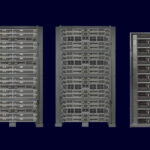ASIA ELECTRONICS INDUSTRYYOUR WINDOW TO SMART MANUFACTURING
Siemens' New Tool to Offer Easy AI for Advanced SoCs
Siemens Digital Industries Software has introduced Catapult™ AI NN software for High-Level Synthesis (HLS) of neural network accelerators. Particularly, for Application-Specific Integrated Circuits (ASICs) and System-on-a-chip (SoCs).
Catapult AI NN is a complete solution that starts with a neural network description from an AI framework. Thereafter, converting it into C++ and synthesizing it into an RTL accelerator in Verilog or VHDL for implementation in silicon.
Catapult AI NN brings together hls4ml and Siemens’ Catapult™ HLS software for High-Level Synthesis. The hls4ml is an open-source package for machine learning hardware acceleration.

Leveraging Industry-Standard AI Frameworks
Siemens Digital Industries Software developed Catapult AI NN in close collaboration with Fermilab, a U.S. Department of Energy Laboratory and other leading contributors to hls4ml. Moreover, Catapult AI NN addresses the unique requirements of machine learning accelerator design for power, performance, and area on custom silicon.
“The handoff process and manual conversion of a neural network model into a hardware implementation is very inefficient. (Also, it is) time-consuming and error-prone, especially when it comes to creating and verifying variants of a hardware accelerator tailored to specific performance, power and area,” said Mo Movahed, Vice President and General Manager for High-Level Design, Verification and Power, Siemens Digital Industries Software.
In addition, Movahed said, this has been possible after empowering scientists and AI experts to leverage industry-standard AI frameworks. This includes neural network model design and by seamlessly synthesizing these models into hardware designs optimized for power, performance, and area (PPA). Thus, Movahed said, has opened to a whole new realm of possibilities for AI and machine learning software engineers.
“Our new Catapult AI NN solution allows developers to automate and implement their neural network models for optimal PPA concurrently during the software development process, ushering in a new era of efficiency and innovation in AI development.”
Extends Capabilities to ASIC, SoC
Currently, runtime AI and machine learning tasks migrate from the data center into everything from consumer appliances to medical devices. For that reason, there is a rapidly growing requirement for “right-sized” AI hardware. Particularly, to minimize power consumption, lower cost and maximize end-product differentiation.
However, most machine learning experts are more comfortable working with tools such as TensorFlow, PyTorch or Keras, rather than synthesizable C++, Verilog or VHDL. There has traditionally been no easy path for AI experts to accelerate their machine learning applications in the right-sized ASIC or SoC implementation.
Moreover, the hls4ml initiative is intended to help bridge this gap by generating C++ from a neural network described in AI frameworks such as TensorFlow, PyTorch or Keras. The C++ can then be deployed for an FPGA, ASIC or SoC implementation.
Thus, Catapult AI NN extends the capabilities of hls4ml to ASIC and SoC design. It includes a dedicated library of specialized C++ machine-learning functions tailored to ASIC design. Using these functions, designers can optimize PPA by making latency and resource trade-offs across alternative implementations from the C++ code. Moreover, designers can now evaluate the impact of different neural net designs to determine the best neural network structure for hardware.
“Particle detector applications have extremely stringent edge AI constraints,” said Panagiotis Spentzouris, Fermilab Associate Lab Director for Emerging Technologies. “Through our collaboration with Siemens, we were able to develop Catapult AI NN, a synthesis framework that leverages the expertise of our scientists and AI experts without requiring them to become ASIC designers. Moreover, this powerful new framework is also ideal for seasoned hardware experts.”
29 May 2024




